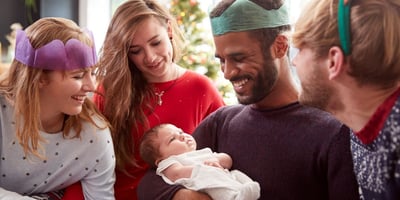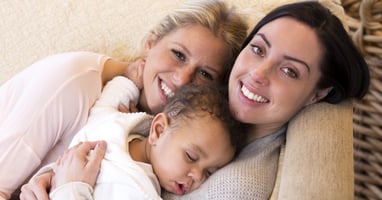Some persons conceived with donor gametes react negatively when they found their birth via donor...
Information provision for parents, donor, and offspring
- Donors should be informed about the national legislation/regulation with regards to the maximum number of offspring or families that can be created from their donation and the rationale behind these limitations.
- Donors should be informed about whether they themselves can set a lower limit on the number of families created and, if possible, how to incorporate these restrictions/conditions in their informed consent.
- Where possible, donors should be encouraged to set limits based on the number of families created rather than the number of offspring.
- Donors should be informed about the possible extent of use of their donation nationally and internationally, and the implications thereof. The lack of (inter)national rules and quotas, potentially resulting in a large number of offspring born from the donation, should be emphasized.
- Donors should ideally be allowed at any point in time to request information on the number of pregnancies, live births and families resulting from their donation.
- Donors should be informed about the duration of storage and use of the donated gametes and the policy once the storage period has ended.
- Donors should be informed whether they are allowed to further reduce the maximum duration for use of their donation and, if possible, how to incorporate these restrictions/conditions in their informed consent.
- In countries that place no restriction on the duration of storage, donors and recipients should be informed that this could lead to offspring with major age differences and a theoretical risk of inter-generational consanguinity.
- Donors should also be informed about what personal data are recorded, how it is stored and the retention period, and how the donor can update this information.
- Donors should be encouraged to update their information held by the MAR centre/gamete bank should relevant medical information come to light concerning the donor or his/her family.
- Donors should be informed about the possibility that they could be contacted by the MAR centre/gamete bank for additional medical information, such as unexpected diseases in the offspring.
- Donors should be aware that the General Data Protection Regulations (GDPR) allows them to request information on the data stored about them.
- Donors should be informed that whether or not they can restrict access to their donation for certain recipients (i.e. fetter their informed consent) will depend on the relevant national legislation.
- Donors should be informed about the relevant regulations with regards to withdrawal of consent, the timeframe within which this is possible in relation to the use of the donation (insemination, fertilization, transfer etc.), and how, if relevant, they can review or change their consent provisions.
- Donors should be informed of the legal regulations regarding post-mortem use of their gametes.
- Donors should make their preference regarding post-mortem use explicit, these should be incorporated—as far as in line with legislation—into the informed consent documentation, explained to potential recipients, and respected.
- Donors should be encouraged to tell their next of kin what their wishes would be in relation to post-mortem use of their gametes, and how they can carry these out.
- Donors should be informed about unanticipated results of medical (and where applicable genetic) screening and, where required, offered a follow-up consultation to explain the results and potential implications.
- Oocyte donors should be informed of all health risks associated with hormonal stimulation and oocyte retrieval. A follow-up consultation with oocyte donors shortly after donation is recommended.
- Donors should be informed about the advisability of having psychosocial counselling and how this differs from medical information provision.
- Counselling should be available before, during and after donating gametes.
- Donors should consider the potential future impact of the donation on their close family and friends.
- Donors who are known to the recipients (i.e. known donation) should have access to counselling on their own and with recipients in order to clarify everyone’s different roles and relationships, disclosure plans and preferences.
- Women donating oocytes from their own treatment (i.e. oocyte sharing) should be informed of the potential repercussions for their own chances of having a child.
- Gamete sharers should be encouraged to consider and discuss how they may feel if their fertility treatment is unsuccessful and the recipients’ treatment results in children.
- Donors and their family should be able to access counselling before, during and after contact with offspring occurs.
- When moving from MAR with own gametes to MAR with donor gametes, pathways to parenthood should be discussed, which include other options such as fostering or adoption.
- Counsellors should discuss the implications of using donated gametes and having a child who is not genetically related to one or both of the couple by addressing the distinction between nature and nurture.
- Recipients should be signposted to available resources, this may include: literature (books); websites; peer support groups; dedicated counsellors and/or organizations.
- Recipients should be supported and informed on how they can talk age-appropriately with their offspring about their conception with donated gamete(s).
- Recipients should be informed about the legal regulations regarding anonymity and identifiability in their country and the country of the donor.
- Recipients should be informed that legislation allowing donor anonymity may change prospectively and retrospectively.
- Recipients should be informed about the national limits on the number of offspring or families per donor and whether donors are allowed to set a limit on the number of offspring/families by putting certain restrictions in their informed consent. Recipients should be informed that such limits can only be adhered to if they provide feedback to their centre after the birth of their child/ren.
- Recipients should be informed about the lack of (inter)national rules and quotas for the maximum number of offspring/families, and possible consequences of this.
- Recipients should be informed if and at what age their children can access identifiable information about the donor. They should also be provided with information about how any medically relevant updates and details on numbers of donor-siblings will or could be given to them.
- Recipients should be informed about the implications of direct-to-consumer genetic testing in combination with social media and online information with regards to their ability to not disclose donor-conception to their child and to the possibility that the donor, the offspring and/or extended family may find each other through this route.
- Recipients should be informed about any donor registries in their country and how these function.
- Recipients should be informed about the rights of the donor with regards to withdrawal of consent for the donation, and of the legislation with regards to the duration of storage (of gametes and/or personal information) and the policy once the storage period has expired.
- In countries that do not restrict the duration of cryopreservation, donors and recipients should be informed that this could lead to offspring with large age ranges and a theoretical risk of inter-generational consanguinity.
- Regarding post-mortem use of donated gametes, recipients should be informed that the local legal regulations and the donor’s preferences should be respected.
- Recipients should consider the possibility of multiple genetic (half-)siblings when choosing a donor.
- Recipients should be informed about the different forms of donation available to them, and—if there is a choice—the (legal) implications of ‘known’, ‘anonymous’ and ‘identity-release’ donation.
- Recipients should be informed that their child may want to contact the donor.
- Recipients should be encouraged to reflect on their choice criteria and what these will communicate to their child.
- Recipients should be informed about medical risks and obstetric risks, in general and specifically for pregnancies using donor oocytes.
- Disclosing to offspring that they were conceived using donated gametes is advised. In line with other guidance documents, disclosing is preferably done when children are young.
- Disclosure should be an ongoing process, rather than a one-off event.
- Recipients should be encouraged to reflect on informing those immediately around and close to their child about disclosing to the child.
- Support and guidance should be offered to families with regards to disclosure. Such support should be tailored to different family types and cultural settings.
- Families may be assisted throughout the disclosure process by signposting to resources such as literature, peer support groups, dedicated counsellors and organizations with this focus.
- Recipients should be informed about the advisability of psychosocial counselling and how this differs from medical information provision.
- Counselling should be available before, during and after using donated gametes.
- Counselling should include exploration of how to handle questions from family, friends and others about their atypical road to parenthood.
- Counselling can help couples decide whether to use donor gametes by discussing the implications of non-genetic parenthood and the disadvantages and advantages, such as increased success rates.
- Counselling should address the decision of whether or not to disclose to the child.
- In known donation, recipients should have access to counselling on their own and together with the donor in order to clarify roles and relationships, boundaries and disclosure.
- Recipients should be informed about the possibilities of donor-conceived offspring connecting through direct-to-consumer genetic testing with their donor or other genetic relatives and the importance of support and counselling for all the parties involved.
- Recipients and donor-conceived offspring with anonymous donors should be encouraged to consider that the donor may not expect to be found and will not have had counselling to prepare them.
- Counselling should be offered for donor-conceived offspring who want to know more about what it means to be donor-conceived.
- Donor-conceived offspring requesting information should be informed about what information they are able to access from the authorities and/or MAR centre/gamete bank in their jurisdiction.
- Donor-conceived offspring should be informed about any donor registries in their country and how these function.
- Donor-conceived offspring should be informed that legislation allowing donor anonymity may change prospectively and retrospectively.
- Donor-conceived offspring born after the lifting of anonymity should be informed from an early age about the type and content of information which they can receive and at what age they are able to access it (this will vary across jurisdictions see above).
- Besides being informed about the relevant regulations/legislation on the maximum number of same-donor offspring/families that they could be genetically related to, donor-conceived offspring should be informed that there is no guarantee that this number will not be surpassed.
- Counsellors should discuss with donor-conceived offspring, who requested counselling, the implications and consequences of revealing to others (e.g. peers) that they are donor-conceived. This should include how to deal with unwanted questioning, potential judgements others may make, difficulties others may find with discussing this in appropriate language, and that once a decision has been made to reveal this, it is not something that can be reversed.
- Donor-conceived offspring should be signposted to available resources, which may include literature (books), websites, peer support groups, dedicated counsellors and/or organizations.
- Donor-conceived offspring should be informed about any donor registries that are relevant to their situation and jurisdiction.
- As reasons for wanting to search for donors change over the life course and vary according to the type of family, the child’s age and the age at which s/he learned about being donor-conceived, counselling should be available at all ages.
- Donor-conceived offspring should be informed that the information that will be available to them in the future may not match their expectations and that this information may have changed since being provided by the donor.
- MAR centres/gamete banks should be prepared to manage the requests of donor-conceived offspring to access information about their donors, according to national legislation.
- Where donor-linking counselling services from national registries are available, these should be involved in facilitating the donor/offspring contact. When not available, the mediating MAR centres/gamete banks should have relevant support structures available.
- Donor-conceived offspring should be informed that they can access available information and still choose not to contact the donor.
- Recipients and donor-conceived offspring with anonymous donors should be encouraged to consider that the donor may not expect to be found and will not have had counselling to prepare them.
- If attempting to contact the donor, donor-conceived offspring should be prepared for different outcomes, including that their donor may not be open to contact or may not have the same expectations in terms of establishing a relationship. If donor-conceived offspring are able to contact the donor (and start a relationship), counselling should be available so they can discuss their expectations and inclusion of the donor in their lives.
- Donor-conceived offspring should be informed that some people report negative experiences when establishing contact with their donors.
- Donor-conceived offspring should be informed about the implications of using direct-to-consumer genetic testing.
- Donor-conceived offspring should be counselled regarding their expectations and inclusion of same-donor offspring in their lives.
- Donor-conceived offspring should be informed before revealing their identity that this is an irreversible decision.
- Donor-conceived offspring should be informed of the possibility of finding many same-donor offspring or none.
- Donor-conceived offspring should be informed of the possibility of identifying similarities between themselves and same-donor offspring regarding physical or behavioural characteristics, but should also be aware they may find no similarities.
- Donor-conceived offspring should understand that, like any other personal relationship, when meeting same donor offspring there are no guarantees of forming a good relationship.
- Counsellors should discuss with donor-conceived offspring requesting support the implications and consequences of telling or not telling parents and other relatives (e.g. siblings) about their search for the donor or same-donor offspring, including the parent to which there is no genetic connection.
- Parents and donor-conceived offspring should be able to access counselling before organizing contact with donor (or the donor’s family).
- Donor-conceived offspring should be able to access counselling when considering trying to find donors and/or siblings through direct-to-consumer genetic testing.
- More research is needed into the long-term psychosocial aspects of forming families through donated gametes and embryos, examining a range of family types and different cultural and social contexts of reproductive donation.



